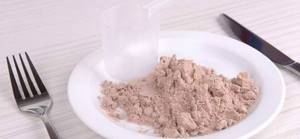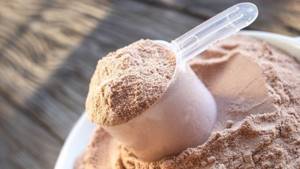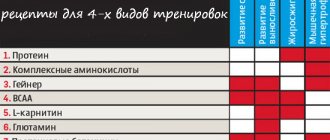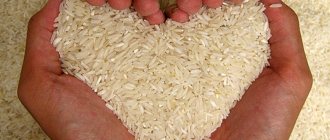- September 12, 2018
- Sports nutrition
- Tatyana Merzlikina
Protein is considered the most popular nutritional supplement in sports nutrition. But any athlete should know how to properly take this or that drug, in what dosage. Only well-chosen sports nutrition will have a positive effect. In the article we will talk about how to properly prepare protein, in what quantities to consume it, and at what time of day.
What do we want to tell you?
Do you want to know everything there is to know about whey protein for girls or men? Well, you've come to the right place because we've worked hard to put together all kinds of information about whey protein. Our team has rewritten this guide several times to help readers get complete answers to all questions.
What is whey protein and what does it consist of?
We are all familiar with cottage cheese and whey. But very few of us knew that this whey is actually a Keto diet and allows you to gain the norm of the necessary microelements, and that we will be taking the same whey more than 200 years later in our protein shakes.
Whey is produced when milk is transported from a dairy farm to a cheese and dairy product manufacturer and digested in special equipment. The curd continues to ferment into cheese, while the whey is separated into proteins and fats. Often at this point the whey is pasteurized, which has been shown to denature it, leading people to simply prefer raw milk, despite the bacterial risks. When companies make cheese, they create a bi-product we call whey protein. The protein itself is made up of globular proteins, which are a very common type of protein. Whey protein is water soluble, which creates problems when mixing it.
You may think you're drinking pure raw whey, but that's a myth.
Whey protein is processed and pasteurized to remove harmful components. It undergoes a process called "denaturation". Whey protein denaturation is one of the main effects of heating milk, which causes a change in the chemical and nutritional properties of the milk. Denaturing sounds like a negative term, but it really isn't. This simply means that the natural state of the serum will change.
You may think that heating whey destroys the nutritional value, but this is another myth.
Think about the food you prepare. You wouldn't eat chicken, steak or eggs if cooking them rendered them useless - they still retain the same amount of protein, and the only thing you're doing is changing its structure.
Why is protein so popular?
Protein has taken the fitness industry by storm and is now reaching the general public. Whey protein for weight loss is perhaps the most popular dietary supplement in the world right now, which is suitable for absolutely everyone: both girls and guys. And there are thousands of different types of drinks, shakes, and powders that contain whey today. Later in this article, we've looked at some of our best protein finds for both muscle building and appetite suppression.
Whey is probably so popular because it is low in calories (1g whey protein = 4 calories) and is the ideal macronutrient for achieving many fitness goals such as building muscle, increasing strength, losing weight and appetite, and maintaining muscles.

How much protein is in different foods?
To get 31 g of protein you need to eat 100 g of caviar or 150 g of beans or drink 1 liter of milk. To obtain 37 g of protein, you will need 200 g of cottage cheese (low-fat) or 150 g of cheese. For an ordinary person who is concerned about his health, he should consume 0.5 - 1 g of protein per kg of weight per day. And for those who want to build muscle mass, the figure should be increased to 2-3 g/kg body weight. Some people have difficulty digesting milk products due to the absence or insufficient amount of the lactase enzyme. But it breaks down milk carbohydrates, not proteins. Therefore, the roots of this problem clearly do not grow from here.
Why is whey protein important as a dietary supplement?
Want to build muscle? Just increase your protein and BCCA intake.
This is the single main reason why the vast majority of people add protein to their diet.
Protein is one of the building blocks of muscle, specifically the parts of muscle that cause contraction. When you exercise, you force your muscles to constantly expand and contract.
This causes tiny tears in the muscle fibers and connective tissues. Your body then tries to adapt to the added load by activating chemicals that increase the rate of protein synthesis in your muscle fibers. This is the reason for muscle growth, development and strengthening of ligaments.
Of all the methods we studied when it comes to hypertrophy (increasing muscle size), taking large amounts of whey protein was the single most compelling and effective option.
You get different types of proteins from many of the foods you eat, from chicken breast to soy. But supplementing your diet with whey protein can be an easy way to increase your protein levels and make sure your body is getting the full complement of amino acids.
Which protein is better to choose? Benefits of Whey Proteins
Whey proteins have a clear advantage over soy and other plant proteins in terms of increasing lean body mass (LEM) and muscle development (Hartman J et al., 2007).
Whey proteins, unlike other protein sources, due to their high content of essential amino acids (3960 mg of leucine, 1800 mg of isoleucine and 1760 mg of valine in one serving), contribute to the effective increase in muscle strength and power, recovery after physical activity, reduction of microdamage to skeletal muscles, accelerating the resynthesis of glycogen (the body's main energy reserve).
Whey proteins are a line of protein fractions including alpha-lactolbumin, beta-lactoglobulin, immunoglobulins and lactoferrin.
All these fractions are considered immunostimulating, which is manifested by a number of bioactive functions (Walzem RM, 2002; Marshall K., 2004):
- Prebiotic effects
- Acceleration of tissue recovery,
- Maintaining gut function (primarily the microbiome),
- Destroys pathogens and removes toxins.
Does protein cause weight gain?

The most important question that interests girls. Macronutrients (protein, carbohydrates and fat) should be consumed in moderation. A large spike in any of these three areas can cause weight gain, and vice versa. Reduce your fat intake and you are more likely to lose weight. For example, if your goal is to consume 140 grams of protein per day and you consume 240 grams of protein, you may gain weight. Although you have consumed protein, it is unclear whether it is the culprit.
Some types of whey protein are intended to be used as meal replacements because they have a high amount of protein and are low in calories compared to other meal options. There are also varieties designed for weight gain with more protein and carbohydrates.
If you're concerned about weight gain or want to make sure you're on the right path to losing weight, counting your macronutrients is a great solution. Apps/websites like MyFitnessPal provide an easy to use platform to track this. You can search for the foods you eat and enter them into the app each day, then it will break down your entire diet for you by macronutrients and calories.
Calories received, calories given. Remember this. If you eat more calories than you burn, then you will inevitably gain weight. Otherwise, if you eat fewer calories than you burn, you will lose weight.
Most whey protein shakes contain about 100-200 calories per serving, which is not much compared to the recommended daily calorie intake of 2000-2500. Also watch your carbs and sugar.
For most people, it's very easy to fit that little "calorie chunk" into your meal plan. On the other hand, working out maximizes the results of whey protein by helping in building muscle mass. The amount of time and effort you put into sports is entirely up to you, but remember, there is a direct correlation: the more you do, the more you get. Determine your personal goals and research protein supplements that interest you. Look them up online. Read the nutrition facts.
Daily norm
Each person's protein needs are directly related to their activity and athletic goals. The more an athlete moves and puts in effort, the more servings of protein he needs. During periods of particularly intense activity, a person needs twice as many protein shakes as in a calm mode.
On average, an athlete’s body requires 2 grams of protein per 1 kilogram of weight every day. This is approximately 180-200 grams for representatives of the stronger half of humanity, and for women the norm is 100-120 grams of protein per day. Experts say that half of the norm can be replaced with protein powder.

This begs the question of how much protein is in a serving of protein? It depends on the type of product you consume. Let's give an example: if a serving of protein is 30 grams and it is stated that it is an 80% nutritional supplement, then the protein content will be 24 grams. You can consume 40-50 grams at one time. Depending on the goals, intensity of training and weight of the athlete, there may be up to four doses per day.
Should You Take Whey Protein?
As I'm sure you can all guess, the answer to this question is probably.
Whey protein can be a critical component when it comes to increasing muscle mass and strength, as well as losing weight. It's a cornerstone macronutrient and an easy way to achieve multiple goals at once. If you're looking to lose fat, protein is a great way to keep your muscle mass intact. Because protein contains only 4 calories per gram, it's easier to feel full when you eat foods low in protein, such as chicken breasts.
If you're a 160-pound woman and your basal metabolic rate is about 1,400 calories a day, you'll be able to eat more food by sticking to foods like chicken breast and vegetables without consuming many calories in the process. While many other foods contain significant amounts of protein, one of the benefits of whey is that it digests quickly, starting muscle growth and stopping muscle loss as quickly as possible.
After a workout, you may not feel hungry enough to eat a nutritious meal, even if your body is protein depleted. Whey protein solves this problem because it is extremely easy to consume, such as drinking it with a glass of milk.
Dosage
To understand what portion of protein (how many grams of protein) to take at a time, you need to carefully read the instructions on the package. A common standard serving is between 20 and 35 grams, most manufacturers include measuring cups in the packaging. You need to read the instructions in order to find out the amount of protein contained in a given product, since this indicator may vary in different mixtures.
It is also worth considering the calorie content of the product. 100 grams of protein contains 350 to 400 calories.
Concentrated, hydrolyzed, isolated. Which one is better?

There are several factors to consider when deciding which form of whey protein to use, such as price, digestibility, amount of protein per serving, etc. We've looked at each to give you a general idea of what they are are different.
Concentrate ($)
This form of serum is one of the cheapest on the market, but don't let that scare you away. This protein is the cheapest because it goes through the least amount of processing, meaning it contains the most lactose and fat of the three options. The more lactose there is, the greater the potential for digestive problems, which may turn some customers off. Although this is a lower grade of whey protein, it still provides 35 to 42 grams of pure protein per 50 gram serving.
Isolate ($$)
This is our top pick due to its price, digestibility, and quality. The isolate goes through a thorough processing that filters out most of the other components, leaving behind the good stuff (whey, of course!). It is a purer form of whey protein that is easier to digest because it contains virtually no lactose. Each 50g serving contains approximately 45-47g of pure protein, which is slightly more than concentrate.
Hydrolyzate($$$)
Hydrolyzed protein is the purest form of protein because it goes through an additional round of processing, resulting in superior absorption/digestion. This is the most expensive protein option on the market, but it's worth it. A 50g serving of hydrolyzed whey contains 38-40g of pure protein. Some may argue that the hydrolyzate is actually easier to digest, but you won’t notice much of a difference with the isolate.
How much protein can the body digest in one sitting?
Having covered the basics of protein digestion, let's take a critical look at the theories and studies that have looked at how much protein can be digested in a given time. It should be noted that we are talking about how much protein can be absorbed, not how much can be used in muscle protein synthesis (MPS). Digestion and SMP are not interchangeable terms, although many people think so.
The hypothesis that the human body has a fairly conventional “protein ceiling” at the level of 30-50 grams has no evolutionary or biochemical justification. In reality, the assumption that your body cannot digest/absorb more than 30-50 grams of protein at a time inherently means that anything above that limit is excreted.
In fact, instead of digesting the “excess” protein, the body magically transits it through the thorny and tortuous digestive tract, bypassing the previously discussed digestive process and sending it to the large intestine. Hmmmm…. if this point of view on physiological processes were correct, we would simply be twisted, not to mention the fact that we would have to live in a toilet.
Moreover, you are unlikely to find literature that states that the body cannot absorb more than 30-50 grams of protein at a time. On the contrary, scientific literature states that the body can indeed digest large volumes; it just takes longer. In fact, rather than passing excess protein into the large intestine, the body regulates the rate of digestion by slowing the evacuation of bolus food from the stomach to the proximal small intestine (in other words, increasing the amount of time it takes for food to be digested in the stomach). Extreme people who like to make the most absurd assumptions, for example, consuming 200 grams of protein at a time, will ask whether the body can digest this horse dose? To be honest, yes, but not all the protein will go to, let’s say, “good purposes.”
Protein can be converted into fats, but the biochemical mechanisms for such conversion are inefficient, so the significance of such conversion is small. It is more likely that the lion's share of the protein will not go to the MPS or another anabolic process, but will be used by the liver for gluconeogenesis and will be stored in the form of glycogen.
So, you can eat large portions of protein foods whenever you want, but don't go to extremes if you want to make the most of all the amino acids.
When and how should you take protein for weight loss?

After training
It's our top pick for protein timing, along with millions of other whey lovers. Consuming whey protein post-workout is most effective and comprehensive, especially when the goal is to build muscle. After a tough workout, muscles crave instant nutrition, and whey protein does just that.
30 minutes before training
Consuming at such times will help maximize your muscle-building workouts. You'll give your body more time to absorb the protein. Be sure to drink it at least 30 minutes before your workout so your body has time to minimally digest it before you engage in intense physical activity.
Before bedtime
Think about it - when you sleep 6-8 hours, your body exists without food or water for a very long time. Although you don't engage in physical activity while you sleep, taking protein before bed will boost your metabolism and prevent muscle breakdown.
In the morning
Waking up after 6-8 hours without consuming any nutrients, a fast-digesting protein like whey will give your body a nice rush of amino acids and allow you to start your day on the right note. Some types of whey protein taken in the morning will help you avoid overeating throughout the day.
Which one to prefer?
Beginners are advised to give preference to complex protein. For experienced athletes, single-component proteins - whey or egg - are more suitable. Casein can also be used, but it should only be consumed at night, since this product is absorbed by the body within 7-8 hours.
Whey protein is suitable for those who want to lose weight, for those who are working to increase muscle mass. Used before and after training. It is preferable to choose isolate. How much protein is in a serving of whey protein isolate? The content reaches 90-95%. It is quickly absorbed and saturates muscle tissue with high-quality amino acids.
The best option would be if you find out from your coach or sports doctor what kind of protein you need specifically.

The Best Whey Protein Products
To build muscle:
GRIND Nutrition Diesel
Our number 1 was chosen based on several factors: cost, taste, and macronutrient levels. This option includes creatine, whey protein, and an ideal 3:1 ratio of instant carbohydrates and whey protein isolate. GRINDS adds creatine to this product, which truly makes it the perfect muscle building shake.
2. IMSOALPHA Instantized Natural Whey Protein
It's no secret that our team is big fans of Mike Rashid. He is already a fitness icon and has some unattainable results. He says IMSOALPHA is the best he has tried. This protein enters your bloodstream immediately, which is a huge plus when your muscles are craving protein after a workout. We like that it is natural, i.e. no artificial colors, flavors, sweeteners or fillers that are not hard to find in most supplements. If Mike Rashid loves it, chances are you will too!
1st Phorm PHORMULA-1 Whey Protein Isolate
It's hard to find a protein powder that mixes well - and you won't have this problem with PHORMULA-1. The company prides itself on being the best tasting and best blending product. This protein can be taken at any time during the day, but is most effective post-workout. Another great fact about this whey protein is that it contains virtually no carbohydrates, which means micronutrients are not compromised either. Customers are raving about this protein and giving it 5/5 stars on SuppReviewers, which means it's more than just hype.
To suppress appetite:
Quest Nutrition Protein Powder
This product has taken the fitness industry by storm due to its unique flavors and amazing macronutrient content. What if I told you that you could include cookies and cream and salted caramel and a chocolate milkshake into your guilt-free diet and still build muscle? Each Quest Nutrition Protein Powder contains only 110 calories, 23 grams of protein and less than one gram of sugar. It tastes like you're eating dessert, plus it keeps you feeling full so you don't end up drinking a real chocolate milkshake. Reviewers on their site report excellent mixability, rich flavor, and no chemical aftertaste, a common problem with other brands.
MyProtein Impact Whey Protein
This product is Europe's No. 1 premium protein. This supplement in particular is known for keeping you feeling full and providing you with quality protein filled with amino acids and nutrients that all food cannot supply on its own. Each serving contains 80% protein, 2g leucine (helps activate the muscle-building process) and only 1g carbohydrates and 2g fat.
How does protein absorption occur?
Most people who rely on the magic of numbers often have no idea what actually lies behind it. As mentioned above, each human body is individual. Therefore, it is foolish to think that more than thirty grams of protein is not absorbed. Since we all have different muscle mass, liver size, intestines, physical activity, all this plays an important role in the process of protein absorption. It is, based on these facts, that your main guide is yourself. In our body, everything is not so simple as to limit metabolic processes and place them in some kind of box, in the form of a specific number.
Digestion (breakdown) and absorption of protein is a very complex and multi-stage process in which enzymes, hormones and the intestine itself interact, from where protein is absorbed.
When food enters the body, almost all of it is digested and absorbed. And this is why people gain extra pounds, because the body cannot throw away extra nutrients. If you are concerned about building muscle, then protein is what you need, since it is the building material for muscle mass, but do not forget about nutrition - it is advisable to eat food five times a day and in equal portions. But, even if you are not interested in gaining muscle and strength, you still need to consume protein for the normal functioning of the body. Most people do not realize that the process of digesting food is a whole complex system. And the quality of absorption itself will depend on many reasons, for example, the expiration date of the food product, what kind of processing it was subjected to, as well as your health at the time of consumption. Protein, as such, is a complex substance and just like glucose, it is not immediately absorbed and will not enter the bloodstream; first, it needs to be properly digested, and this varies over time. In order to understand the duration, it is enough to remember that if you eat 100 grams of 100% protein (sports nutrition), it will be digested in about 30 minutes, but this despite the fact that the sports nutrition (protein) has already been broken down into amino acids. However, what can we say about natural products such as porridge, cottage cheese, eggs, meat, fish, beans, of course, they require many times more time for complete absorption.
In order to digest and assimilate natural protein products, our body expends resources not only from the stomach, but also from the intestines, enzymes and hormones. That is why the duration is reduced to 2-4 hours. Now it becomes clear that the statement “more than thirty grams of protein is not absorbed at one time” is another myth that people like to fool. Now you understand the absurdity of the question: “How much protein is absorbed at a time?”
Protein content in food
To get a general picture of the protein content in a particular product, you just need to know the following:
- 150 grams of cheese - 37 grams of protein
- 200 grams of low-fat cottage cheese - 37 grams of protein
- 150 grams of beans - 31 grams of protein
- 100 grams of caviar – 31 grams of protein
- 1 liter of milk contains about 31 grams of protein and so on.
Of course, these data are given so that you are aware of where and how much protein can be found, not at all so that you frantically run around with weights and go crazy, although some who engage in bodybuilding behave exactly like this. But for an ordinary person interested in their health, it is important to remember that 0.5-1 grams of protein per day per kilogram of body weight will be sufficient to maintain health. As for those who want to build muscle mass or to maintain it, they need to consume 2-3 grams of protein per kilogram of body weight.
Bodybuilders prefer the leanest protein sources that contain so-called “good” fats, these include: various varieties of lentils, beans, beans, chickpeas...
"Protein" creativity

The great thing about whey protein is that it is extremely versatile. The quickest way is to shake it with milk to create a protein shake. If you really want to get a little creative, there are many baking recipes that also include whey protein. The possibilities are endless!
How to cook protein correctly
The main condition is not to dilute the cocktail with hot water. This is hello to protein folding. There will be no benefit from such a drink. Athletes mix the required dose of protein with milk or cold water in a shaker (a special glass with balls inside). The best option is milk at room temperature. If desired, you can dilute the protein with kefir. It all depends on preferences and capabilities.

Some amazing ideas for inspiration:
Mix coffee, chocolate protein and ice for a mocha in a cup.
You could just mix your protein powder with water and ice, but if you want something fun, add your favorite fruit! Smoothies are always refreshing and contain many valuable nutrients. Strawberry + banana is a classic combination that pairs well with plain or vanilla whey protein.
Everyone loves baking - so why not bake something with whey protein? The best part of this recipe is that it only takes a minute to bake. Search the Internet for information about cupcakes in a mug.
Satisfy your sweet tooth with this chocolate chip cookie recipe. You can make this at home with just four ingredients: whey protein, nut butter, milk (any kind), and chocolate chips. The Complete Guide: Whey Protein for Weight Loss
Is it possible to drink protein without training?
Can you drink protein if you don't exercise? Drinking protein without training is okay if your diet doesn't contain enough protein. In this case, we focus on the protein dosages recommended in the absence of physical activity - 1.5 g per 1 kg of weight.
What negative consequences can arise from protein deficiency in the body? are possible :
- fragility, brittleness of nails
- muscle weakness
- lack of muscle mass
- hair loss, dry hair
- overeating, sugar cravings
- swelling
- weak immunity
- migraines, headaches
- insomnia
- mood swings
In order to prevent the occurrence of such symptoms, you should carefully monitor the amount and quality of protein consumed in your diet.











